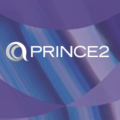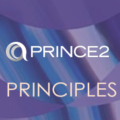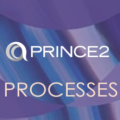
PRINCE2 Themes are functional categories, or knowledge areas, that a project must draw on at any time in its life cycle. Like a train that needs wheels, comfortable chairs, windows, and a driver – Each part works together to allow it to arrive at the destination in the maximum amount of comfort.
The seven PRINCE2 Themes are:
- Business Case
- Organization
- Quality
- Plans
- Risk
- Change
- Progress
Business Case
 No one would get on a train that had no specific destination in mind. Hence, the first theme asks the question: Where are we going?
No one would get on a train that had no specific destination in mind. Hence, the first theme asks the question: Where are we going?
PRINCE2 projects must have a documented business case for the project and continuously validate it throughout the project life cycle.
This business case results in benefits to the parent organization. For example, a highway paving project produces a rehabilitated highway as its deliverable, but the benefits are the improvement of the highway network. The business case is developed and maintained via the following two management products:
- Business case: This document provides the costs, benefits, expected dis-benefits, risks and timescales against which the viability of the project is continuously verified.
- Benefits Management Approach: The means by which the benefits will be achieved.
The business case must include not only the costs of the project but also any ongoing operational costs once the project is complete.
The business case must be reviewed and verified at the end of each management stage, at the end of the ‘initiating a project’ process, and at the end of the project to ensure the benefits will be realized.
Often there is a difference between completing the project’s deliverables, and realizing the project’s benefits. For example, the completion of a software project might be a project deliverable, but if nobody uses the software, the benefits have not been realized. Hence, the software development project should manage the benefits, not just the deliverables.
Organization
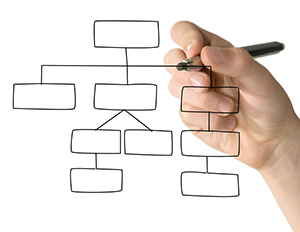 If the driver tried to push the train, or the mechanic tried to put the wheels on the roof, the train would not arrive at the destination (well, maybe…). Thus, the second theme asks the question: How are the pieces going to work together?
If the driver tried to push the train, or the mechanic tried to put the wheels on the roof, the train would not arrive at the destination (well, maybe…). Thus, the second theme asks the question: How are the pieces going to work together?
PRINCE2 mandates that certain project roles are filled on each project. This theme outlines the standard PRINCE2 project organizational chart and roles and responsibilities.
There are two management products required in the Organization theme:
- Project Initiation Document (PID): This document provides the overall plan for the project. It identifies who is responsible for which part of the project and establishes their authority to act and make decisions.
- Communications management approach: This document establishes the communications needs of each stakeholder, communication frequencies and styles.
The PRINCE2 project roles are as follows:
- Corporate, programme management or the customer. Must appoint the executive and project manager, and provide communication to/from the project as necessary
- Executive. Similar to a project sponsor, they must appoint the project manager and project management team, and approve the communications management approach.
- Senior User. This is the representative of the users, and they must define the user requirements and expectations.
- Senior Supplier. This is the representative of the project suppliers, and they must advise on the technical aspects of the project’s products.
- Project Manager. The person who prepares and updates the project plans, undertakes stakeholder engagements, and manages the work required to produce the project’s deliverables.
- Team Manager. The person who manages the day to day work of one aspect of the project. They report to the project manager.
- Project Assurance. This branch reports to the project manager, and must advise of stakeholder engagement and communications management approach.
- Project Support. Often in the form of a Project Management Office, project support provides administrative support to the project management team.
Multiple roles can be filled by the same person, particularly on small projects where the project manager, team manager, project assurance, and project support roles can be filled by one person.
Quality
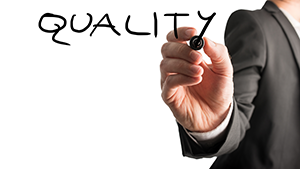 Poor project quality is like riding on a train that made loud rattling noises – It might get to the destination, but nobody will be happy with the result.
Poor project quality is like riding on a train that made loud rattling noises – It might get to the destination, but nobody will be happy with the result.
Since projects produce one or more deliverables to a client/customer, the quality of those deliverables is an important consideration. If it is lower than expected, the project might incur extra costs (and time) to correct the deficiencies. On the other hand, if it is higher than expected the project has already incurred unnecessary costs (and time).
PRINCE2’s Quality theme mandates two management products:
- Quality Management Approach. This document identifies the acceptance criteria of the deliverables, when and how they will be measured, who will measure them, and any other quality control metrics.
- Quality Register. The quality activities are recorded into the Quality Register to summarize all of the quality assurance and quality control activities that are planned or have taken place.
Quality acceptance criteria can be developed internally or specified externally. There are many international organizations who’s mission is to provide quality acceptance criteria – There is very little one can do these days that doesn’t have an ISO, IEEE, W3C, etc. documenting its quality standards. There are organizations specific to each country, and there are organization specific to each industry. Both of these avenues should be investigated.
Most organizations also have quality standards, and they can be easy to miss therefore internal standards are worth looking into.
Plans
 Project plans are like the train schedule – You look at it carefully in order to decide if you want to proceed. Also, you would never agree to it at all if there wasn’t one. Thus, they define the project and instill confidence in it prior to its initiation.
Project plans are like the train schedule – You look at it carefully in order to decide if you want to proceed. Also, you would never agree to it at all if there wasn’t one. Thus, they define the project and instill confidence in it prior to its initiation.
The project plans define how the project will be carried out. This theme represents the breakdown of the project into management stages, as well as the schedule, budget, project team, risks, and any other planned element of each stage.
The overall project requires a plan. Also, each management stage requires a stage plan, which is similar in content to the project plan but includes the day to day stage information.
Also, each product produced by the project requires a product description.
In addition, where there is a deviation outside of established tolerance, an exception plan represents the changed plan from that point to the end of the management stage.
PRINCE2 does not specify a format for the plans. Charts, documents, spreadsheets and whiteboard drawings are all valid implementations of a project or stage plan. However, most plans should incorporate the following information:
- Product description: A detailed picture of the product that is being produced.
- Work breakdown structure: An activity list for the work required to produce the product.
- Schedule: A breakdown of when the activities will take place.
- Budget: A breakdown of how much the activities will cost.
- Quality register: A listing of what quality assurance and control activities will take place.
- Risk register: A listing of the threats to the project, their severity, and response plans.
Risk
 Projects, like train rides, can end in disaster. Train companies go to great lengths to ensure the unexpected doesn’t happen, but even if it does there are many contingency plans in place and significant effort is spent on risk mitigation and response.
Projects, like train rides, can end in disaster. Train companies go to great lengths to ensure the unexpected doesn’t happen, but even if it does there are many contingency plans in place and significant effort is spent on risk mitigation and response.
PRINCE2 mandates that all projects identify risks to their success factors, including regular reviews and re-analysis throughout the project. They must also define their risk management approach, which covers how risks are identified and analyzed, as well as the roles and responsibilities related to risks.
There are two management products required under this theme:
- Risk Management Approach. Describes how risk will be managed. Describes the risk identification techniques and prioritization methods to be employed. Provides guidelines on risk response plans and procedures for the ongoing re-analysis of risks.
- Risk register. The itemized listing of project risks, including prioritization into probability and severity. Response plans are also drafted up for the most important risks.
Importantly, the opposite of risks – opportunities – must also be included as part of the risk theme. Opportunities are risks that have a positive consequence, and pursuing opportunities can make an enormous difference in project results.
Change
 It’s rare that a project doesn’t experience some form of change from its original plans – budgets, schedules, quality criteria, or any one of the thousands of real world issues that can come up. Although it’s impossible to predict every change that a project will go through, the preparation of change procedures and an organized system to deal with the changes is a life support system that projects can’t do without. Hence, the second last theme is dedicated to project changes.
It’s rare that a project doesn’t experience some form of change from its original plans – budgets, schedules, quality criteria, or any one of the thousands of real world issues that can come up. Although it’s impossible to predict every change that a project will go through, the preparation of change procedures and an organized system to deal with the changes is a life support system that projects can’t do without. Hence, the second last theme is dedicated to project changes.
This theme requires two management products:
- Issue Register. In order to track the items that pop up that require project changes, the Issue Register allows the project manager to track and mitigate all issues that result in project changes.
- Change Control Approach. This document contains the policies and procedures that are triggered when project changes occur. Corrective actions are specified for various circumstances, and procedures for capturing and assessing issues are addressed.
The project manager could make decisions regarding issue resolution without escalating them to the project board, if the Change Control Approach delineates this authority clearly.
Progress
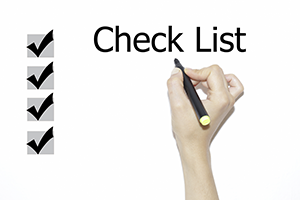 Nobody wants to ride on a train that doesn’t get you to the destination on time.
Nobody wants to ride on a train that doesn’t get you to the destination on time.
Hence, the Progress theme consists of measuring the achievement of the objectives of the project plan. Progress control involves measuring actual progress against the targets of time, cost, quality, scope, benefits, and risk. The actual progress is used to make decisions on proceeding with the project, making changes, or cancelling the project.
PRINCE2 projects must define their approach to controlling progress in the Project Initiation Document (PID). The project is divided into stages, each of which is authorized separately. Progress reporting is either:
- Time driven. Occurs at regular intervals
- Event driven. Occurs when a certain trigger event happens.
In addition, four types of reports are used to report project progress:
- Checkpoint Report. Typically produced by the team manager, this report document the project progress at any point in the management stage.
- Highlight Report. Typically produced by the project manager, this report details the progress for the management stage and/or the whole project.
- End Stage Report. Provides the project board with a progress report for a management stage.
- End Project Report. Provides the project board with information necessary to evaluate the project and authorize its closure.
Those are the 7 themes of PRINCE2, which will keep you on the right track, full steam ahead on board the express train to project success.
Good luck!

